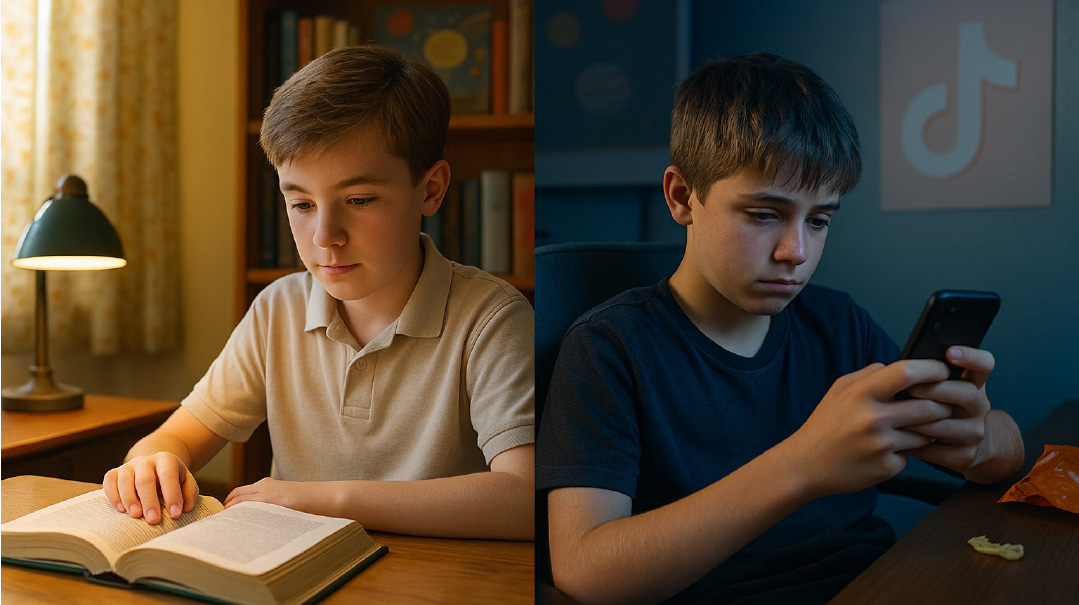Eternity Envy

Their obvious differences make chassidim the prime targets not only of street thugs, but also of the New York Times
C
lose to a decade ago, the ever brilliant economist and essayist David Goldman noted that attitudes toward Israel among Christian churches correlate highly with the relative flourishing of said branch: “The most successful Christian communities embrace the State of Israel, while the least successful abhor it.”
The immediate impetus for that observation was the 2013 publication by the Church of Scotland of “An Inheritance of Abraham?,” a veritable potpourri of reasons for rejecting the Jewish claim of a historical connection to the Land Of Israel.
Once a hotbed of Christian Zionism — the phrase “a land without people for a people without land” was coined by a Church of Scotland cleric — the Church of Scotland has become an implacable enemy of Israel, even as its numbers dwindle to almost nothing. Since 1956, it has shed two-thirds of its members, and continues to lose five percent of its existing membership every year.
The same phenomenon is observable in the United States. The old mainline churches — Episcopalian and Presbyterian — have passed repeated resolutions urging divestment from Israel in recent years, as the number of their adherents shrinks. Meanwhile, the most ardent Christian supporters of Israel are the evangelicals, who are also the fastest growing element of American Christianity.
And what is true of churches also goes for nations and even entire continents. Europe’s population is in free fall. No European country has close to replacement level fertility rates. The Russian population is projected to be 115 million people by 2050, which is 30 million less than in 2000. In 2017, Germany, France, England, and the EU were all led by politicians who were childless. Not surprisingly, according to Goldman’s thesis, hostility to Israel runs high in Europe. By a ratio of four to one, Britons, for instance, favor the Palestinians over Israel, and Britain is far from the most anti-Israel country in Europe.
GOLDMAN EXPLAINS the hostility to Israel and Jews among those peoples and institutions in dramatic demographic decline with an observation made by the German-Jewish thinker Franz Rozensweig: “Just as every individual must reckon with his own death, the peoples of the world foresee their own extinction…. Indeed the love of the peoples for their own peoplehood is sweet and pregnant with presentiment of death…. Thus the people of the world foresee a time when their land with its rivers and mountains still lies under heaven as it does today, but other people dwell there; when their language is entombed in books; and their laws and customs have lost their living power.”
Those filled with presentiments of their own demise are filled with what might be called “eternity envy” toward that nation, i.e., the Jews, not thus threatened with extinction. To see the Jews return to their ancient land, once more speaking their ancient tongue, and still observing their ancient law must be particularly grating to Europeans who can already foresee another people dwelling in their land, speaking another language, and having sacked a once proud culture.
THAT SAME PHENOMENON — of those facing demographic disappearance despising those whose demographic future looks bright — can be observed within the Jewish people itself. Non-Orthodox American Jewry is in a demographic death cycle as a result of low marriage and fertility rates and intermarriage, whereas the chareidi world is experiencing rapid population explosion.
And it can be plausibly argued that presentiments of their own disappearance fuel much of the disdain for chareidim by their non-Orthodox coreligionists. Professor Moshe Krakowski explores that disdain in “The Jews of the Jews: The mindset behind the New York Times’ slander of Hasidim” in the October edition of Commentary. He begins with the refrain from Tom Lehrer’s old ditty “National Brotherhood Week,” which concludes “And everybody hates the Jews.” And who do the Jews hate? asks Krakowski. He answers: “the Haredim.”
“Everyone, especially other Jews (including supposed experts on Haredim), ‘knows’ something about the ultra-Orthodox Jews who go by the term Haredim, including but not limited to Hasidim,” writes Krakowski. “[And] that ‘knowledge’ is inevitably negative.”
He continues, “The mere existence of the Haredim challenges all sorts of claims about religion and modernity that other Jews, in particular, hold sacred…. They validate everything other Jews secretly fear. They are a living embrace of the idea that the Jew is different.”
And of those who are different, none are more different than the chassidim, with their unique dress and insistence on speaking Yiddish. A litvisher yeshivah bochur can move comfortably into a Wall Street law firm without giving up his dark suit and white shirts. At worst, he or she will be suspected of dissing “dress down day.” In his early years in the firm, senior partners may struggle with a name like Herschel. (A friend of mine finally gave up on trying to teach the partners how to pronounce Herschel, and when introducing himself would add, “But my friends all call me Chip.”) But, by and large, the integration is relatively easy. Virtually every major New York firm today boasts an in-house minyan.
But chassidim can never blend in so easily. One of my roshei yeshivah once attributed the success of so many chassidim in business to the strength of character developed by not worrying about how one is viewed by others.
Their obvious differences make chassidim the prime targets not only of street thugs, but also of the New York Times. In a day and age when investigative journalism is almost dead, the Times invested a fortune, over a period of more than a year, not only in investigating the instructional failure of 12 chassidic schools to bring students to grade level in math and English, but also in another dozen exposés of other aspects of chareidi life, untempered by a positive word.
Executive editor Dean Baquet told the newsroom in 2019 that the Times would have to find new stories to develop, when Special Counsel Robert Mueller was unable to find any corroborating evidence of Trump-Russian collusion. What followed? The 1619 Project and exposés of the chassidic world.
The Times, after all, is still the paper of record for non-Orthodox American Jewry, and serves them what they want to hear, prepared by lead reporters with readily identifiable Jewish names.
And that is why, I suspect, that contrary to Michelle Goldberg’s assertion in the November Munk debate in Toronto that the Times is always eager to tell stories that undermine “what everyone knows,” we will not soon see the Times updating Rutgers University professor Debra Renee Kaufman’s 1991 work Rachel’s Daughters, about highly educated, once ardent feminists, who became baalos teshuvah.
And though the Times’ ongoing series of exposés of chassidic society is almost entirely based on the testimony of those who have left the community, there will not soon be a countervailing Times series based on discussions with highly credentialed and successful baalei teshuvah who made the choice to join.
SINCE THE BEGINNING of the Enlightenment, Jewish reformers have looked askance at their traditional, observant fellow Jews, whom they viewed as impediments to their successful assimilation into the larger society by virtue of their insistence on standing out as Jews.
That assimilated desire to be considered like everyone else has led directly to demographic implosion. For if, in fact, Jews are no different from everyone else, and were not chosen by G-d for a specific mission, then why marry Jewish, why bring Jewish children into the world, why even care whether the Jewish people continue to exist?
The task of preserving the Jewish people will be left exclusively to those who live with the consciousness of being part of a 4,000-year history, and whose most fervent hope is to carry that story forward through their generations.
And what will those embarrassed by being distinctive gain? Nothing. Back in 1991, former Times executive editor Abe Rosenthal pilloried the indifference of so many secular Jews to the Crown Heights riots: “Are the Hasidim a little too Jewish for them? Maybe they think only a certain type of Jew gets beaten up. Sweethearts, by you, you are Park Avenue, by your wife you are Park Avenue, but by an anti-Semite you are a Hasid.”
(Originally featured in Mishpacha, Issue 944. Yonoson Rosenblum may be contacted directly at rosenblum@mishpacha.com)
Oops! We could not locate your form.







